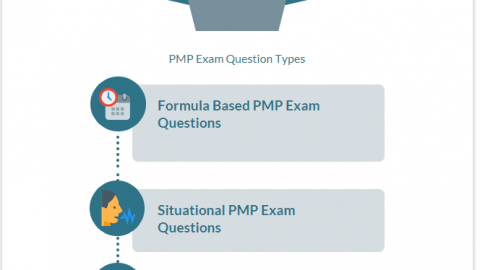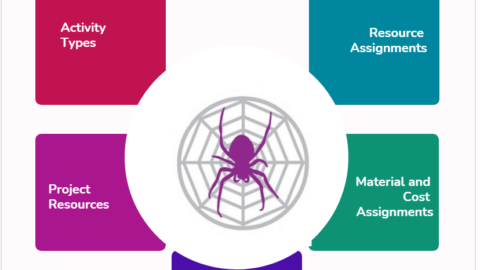What is Business Forecasting? How It works?
The tools and procedures used to forecast business events such as sales, expenditures, and profits are referred to as business forecasting. Examples and case studies show that both qualitative and quantitative business forecasting methods are used to generate better strategies based on these accurate predictions. Past data is gathered and evaluated using quantitative or qualitative models in order to identify trends that can be used to guide demand planning, financial operations, future production, and marketing operations.
Table of Contents
What is Business Forecasting?
‘‘Business forecasting definition’’ is the assessment of a company’s or industry’s future developments based on previous and present data trends and patterns.
This corporate approach aids in resource allocation and strategic planning for prospective projects, activities, and expenses. Forecasting allows organizations to better manage their resources, match their objectives with current trends, and boost their chances of surviving and being competitive.
Forecasts are used to generate better strategies and project plans based on available, relevant facts from the past and present in order to safeguard the future of your company. Organizations that use various forecasting methods can get unique, proprietary insights into expected future occurrences, leverage their capabilities, set developers OKR, and become market leaders.
Managers undertake thorough and precise business projections in order to ensure that appropriate decisions are made based on evidence and reasoning rather than emotions or gut sensations.
What are some of the most essential business forecasting methods?
There are various approaches to business forecasting. They are divided into two categories:
A. Quantitative Business Forecasting
When accurate past data is available, use quantitative forecasting to examine trends and anticipate the likelihood of future events in your organization or sector.
Quantitative business forecasting method uses current data to discover trends and predict the most likely outcomes. It combines and analyzes several variables in order to determine the relationship between events, elements, and results. Past sales figures are one example of data utilized in quantitative forecasting.
Quantitative models deal with numbers, formulas, and data. In quantitative analysis, there is very minimal human intervention. The following are some examples of quantitative models used in business forecasting:
1. Trend Analysis or Time Series Analysis
This is a common corporate forecasting strategy in which historical data and events are utilized as a standard for predicting future events.
2. Econometric Modeling
Mathematics and statistics serve as the foundation for forecasting the future in this method. Multiple regression equations are created by mathematicians to test the datasets, their consistency, and their interaction with one another.
3. The average approach
This method assumes that future value projections are equal to the average of previous data. This method should only be used when the future appears to be similar to the past.
4. Indicator Approach
The indicator approach, which is one of the most extensively used corporate forecasting techniques, monitors and tracks leading indicators in order to predict the future. This necessitates the continuous monitoring of a business’s many KPIs and the formation of an opinion based on that, which serves as a business forecast.
B. Qualitative Business Forecasting
Predictions and projections based on the opinions of experts and customers are known as qualitative business forecasting. When there isn’t enough historical data to study in order to make a quantitative forecast, this strategy works well. Industry professionals and forecasters assemble together available data to produce qualitative judgments in these circumstances.
With short-term projections, qualitative models work well. They are expert-driven, resulting in divergent viewpoints and a reliance on judgment over quantifiable data.
The following are some examples of qualitative models used in business forecasting:
1. Market Resarch
Market research that is comprehensive and in-depth in order to determine the outcome of a launch or commercial decision. It can involve conducting large-scale polls and surveys to assess the mood and pulse of your target audience, and then making business decisions based on that information.
2. Delphi Model
A panel is formed in this business forecasting method, and their ideas and opinions on a certain topic are solicited. The experts’ forecasts are then anonymously analyzed, and an unbiased prediction is shared as a result.
What is Importance of Business Forecasting?
Forecasting is critical in corporate management for practically every decision in every industry. Business forecasting provides information that assists business managers in identifying and understanding planning flaws, adapting to changing conditions, and maintaining effective control of business operations.
Determine the feasibility of facing existing competition, measure the possibility of creating demand for a product, estimate the costs of recurring monthly bills, predict future sales volumes based on past sales data, efficient resource allocation, forecast earnings and budgeting, and scrutinize the appropriateness of management are some examples of business forecasting.
Getting to Know How It Works
Forecasting is a tool that businesses utilize to help them establish business plans. Past data is gathered and evaluated in order to uncover patterns. Today’s business forecasting approaches have been changed by big data and artificial intelligence.
While there may be significant differences in practice when it comes to business forecasting, most predictions follow the same procedure conceptually:
- It is decided on a problem or a data point. “Will people buy a high-end coffee maker?” is a good example. or “How much will we sell in March next year?”
- Theoretical variables are chosen, as well as an ideal data collection. This is where the forecaster determines which variables should be evaluated and how the data should be collected.
- It’s time to make a decision. To simplify the forecasting process and reduce the time and data required, the forecaster makes several explicit assumptions.
- A model is selected. The model that best fits the dataset, selected variables, and assumptions is chosen by the forecaster.
- Analysis; The data is examined with the model, and a forecast is created based on the results.
- Verification; The forecast is compared to what really occurs in order to detect issues, alter some factors, or pat themselves on the back in the rare occurrence of an accurate forecast.
After the analysis has been confirmed, it must be condensed into a format that allows stakeholders or decision-makers to easily understand the results. Data visualization and presentation skills come in handy in this situation.
What Do You Think?
By the end of this article, you’ll learn about what business forecasting is, how it works, and its importance.
Further Reading

Victor Z Young is a Civil Engineer with 35 years of experience working alongside the executive team of various construction companies. Victor specializes in construction insurance, delay analysis, performance analysis and engineering. He holds a Doctor of Project Management from Northwestern University.










